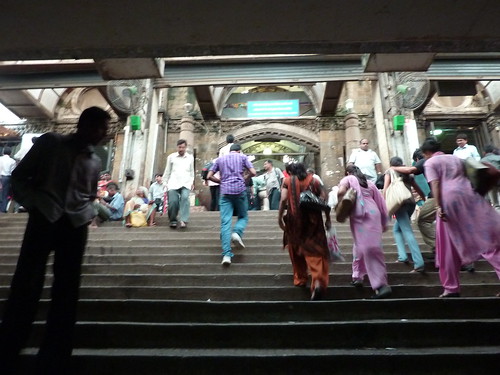I am posting excerpts of the interview I did with Alain Bertaid.
Alain Bertaud is an urban planner with over 30 years experience and has worked in America, Europe, and Asia. After retiring from the World Bank as a Principal Urban Planner, he has been working as a consultant for the World Bank and other private organizations. Over his 20 years of service with the World Bank, he participated in the design and appraisal of large urban infrastructure and housing projects. His most recent work involves advising municipalities in land use and land regulatory issues in relation to land markets.
What are the fundamental mistakes we have made while building our
cities?
A weak municipal corporation with little taxable power has translated to a substandard infrastructure. The lack of modern infrastructure in Indian cities is not due to lack of resources but because of a weak municipal administration. One of the main problems is absence of strong mayors with a term long enough to carry through a project. Also, too many cities are dependent on the state legislature for decisions concerning their regulations and I believe it is critical for these decisions to be made at a local level. We also see layers of absurd regulations which have accumulated over the years that have never been repelled although everybody admits these regulations have never met their objectives. The Urban Land Ceiling Act is one good example of this tendency.
Another inclination of keeping the FSI low in the centre of the city to prevent congestion has been negative seeing that it creates shortage of floor space where it is the most needed. As a result, today middle class Indians have to live in much smaller and uncomfortable dwellings than they would if the regulations on FSI were changed. The lack of investment in infrastructure has often been a pretext to justify a low FSI. But it is important to realise that development creates an economy to fund infrastructure.
2. What are the critical problems that have confronted Indian urban development? What can be done about it now?
In summary, it would be an inefficient and often unaccountable administration that has prevented for over 50 years an otherwise dynamic and enterprising private sector from building the modern cities that would be expected in an enterprising country like India.
Some of the steps to create better cities are by empowering and making the city authorities accountable. Ideally, cities should be able elect mayors for at least 2 terms of 4 years with wide powers. An elected city council should have wide taxation and spending power and regulatory power for land use. India should also review all the obsolete regulations and repeal the ones which have no clear objectives or have failed. It is important to make major investments in infrastructure with possibly transfer of capital from the centre and the possibility for cities to issue bonds to finance their infrastructure. Bonds can be guaranteed by tolls and taxes established by the new mayor and city council.
3. How would you define an ideal city?
My idea of ideal is pretty down to earth. It is a city where a very large number of people can move about back and forth with the maximum comfort and minimum friction. A city where, in each and every home – the water flows when you open a tap or light turns on when you push the switch. I envisage a city where the poor can find modest shelter on their own without government intervention, in many areas of the city, with basic services like water electricity, sewer, health and education. It would be a city where business wants to locate because the regulations are clear, decisions can be taken rapidly, and because there is a large educated manpower eager to work.
4. What are your thoughts on urbanization in Bangalore?
In Bangalore the dynamic private sector selected the only viable short term solution to be able to operate efficiently: to create high tech “campuses” in the periphery of the city, which are in fact large privately, run gated communities completely independent from the municipal corporation. While it was the best solution to get the IT industry developing rapidly it has not been good for the spatial structure of city of Bangalore itself, as it has created a polycentric city with some glamorous suburbs but a continually decaying inner core.
5. What are your thoughts on high density development?
High densities and high FSI are necessary for Indian cities to be able to maintain an efficient network of public transport. If urban transport has to rely on 2 or 3 wheelers or private cars the amount of pollution and congestion due to transport will be unbearable.
6. What are your thoughts on the transportation needs for our cities today?
On a macro level, to make urban transport work, it is necessary to revise the regulations which are distorting the urban structure of Indian cities. It is important to invest in rehabilitating the historical core of cities. The city can then handle the congestion through investment in public transport. One needs to push a high FSI in the centre and a low one in the suburbs (the opposite of what is happening now). Metro is not necessarily the best solution; dedicated bus ways can be a more efficient strategy in some cases. In Bangalore, unless the city centre is rehabilitated (through higher FSI) public transport will never work. The IT campuses are dispersing employment in the suburbs. And for suburb to suburb trips road travel is more efficient than public transport.

![]() photo credit: xurde
photo credit: xurde
